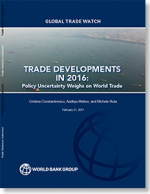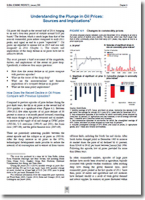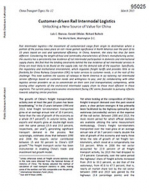Customer-Driven Rail Intermodal Logistics: Unlocking a New Source of Value for China
China, and its national railway operator China Railway Corporation (CRC), are in the midst of a particularly favorable environment towards reforming the rail intermodal sector.
Rail intermodal logistics, the movement of containerized cargo from origin to destination where a portion of the journey takes place on rail, have gained significance in North America over the past 10 to 15 years based on cost and operational efficiency.
In China, however, the story has thus far been different. Considering the length-of-haul and commodity characteristics of Chinas manufacturing sector, the country has a persistently low incidence of rail intermodal participation in domestic and international supply chains.
We find that the binding constraints behind the low incidence of rail intermodal services in China are most likely to be found on the supply side, not the demand side of the equation.
Specifically, the regulatory and institutional environment, which regulate freight tariffs and provides little or no flexibility for China Railway Corporation (CRC) to tailor services to customer needs, is at the root of this challenge.
This note outlines the success of railways in North America in (a) tailoring rail intermodal service offerings based on customer needs and willingness to pay; and (b) collaborating with other logistics service providers so as to concentrate on their core (rail transportation) competency, while leaving other segments of the end-to-end intermodal supply chain to those most efficient in those segments.
The current policy and economic environment facing CRC seems favorable to pursuing reforms towards adopting similar practices.
This paper is part of the China Transport Note Series produced by the World Bank to share experience about the transformation of the Chinese transport sector.
The World Bank has supported numerous freight and passenger railway development projects in China.
What’s Related




Favorites





